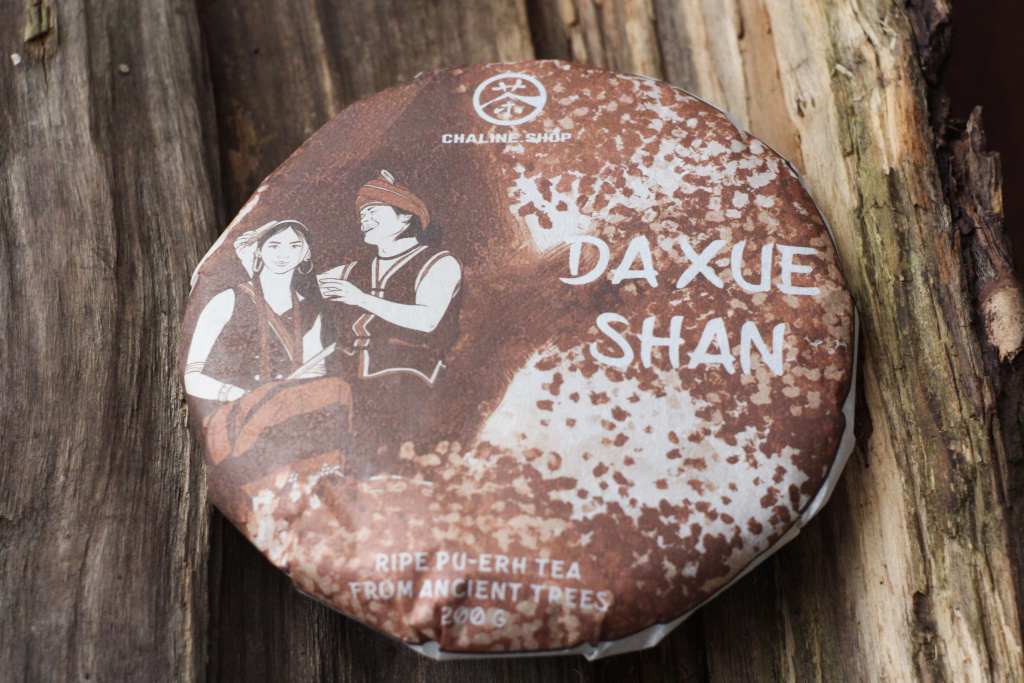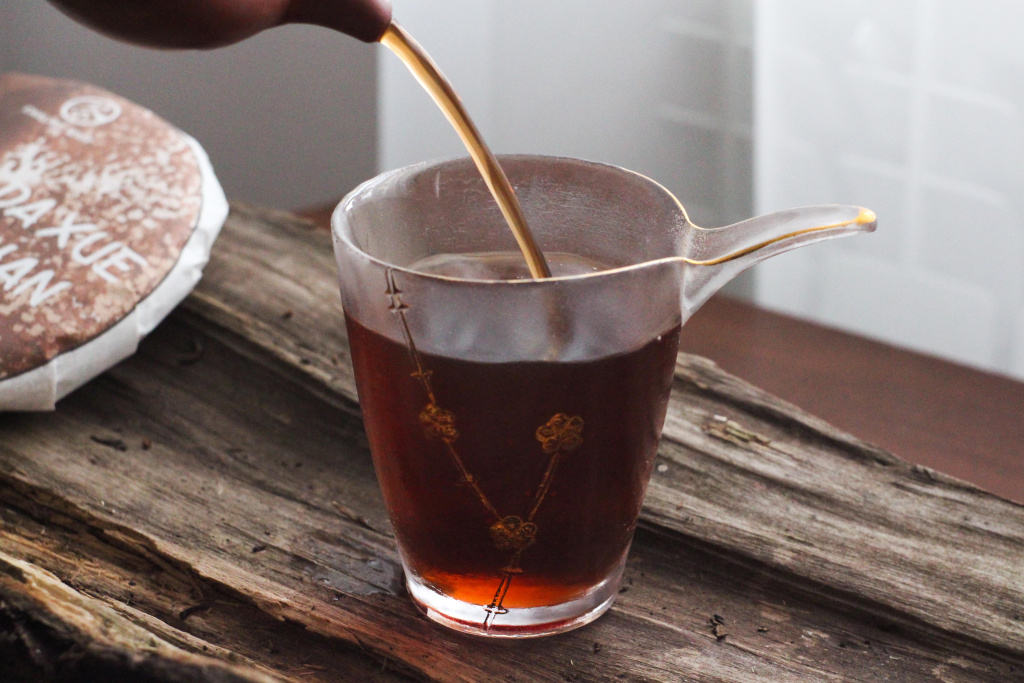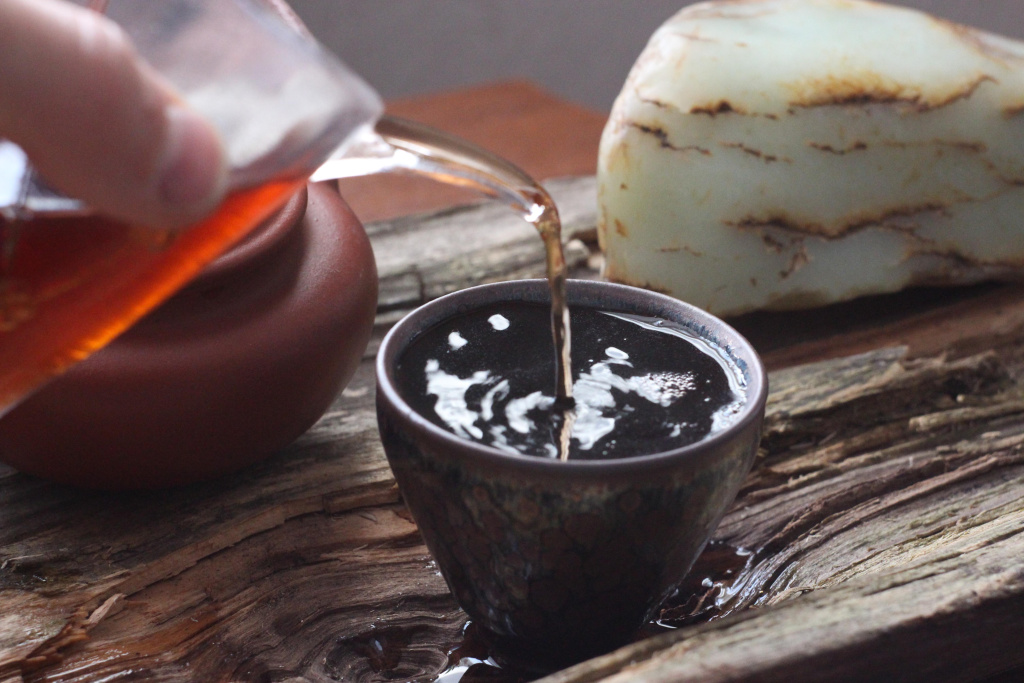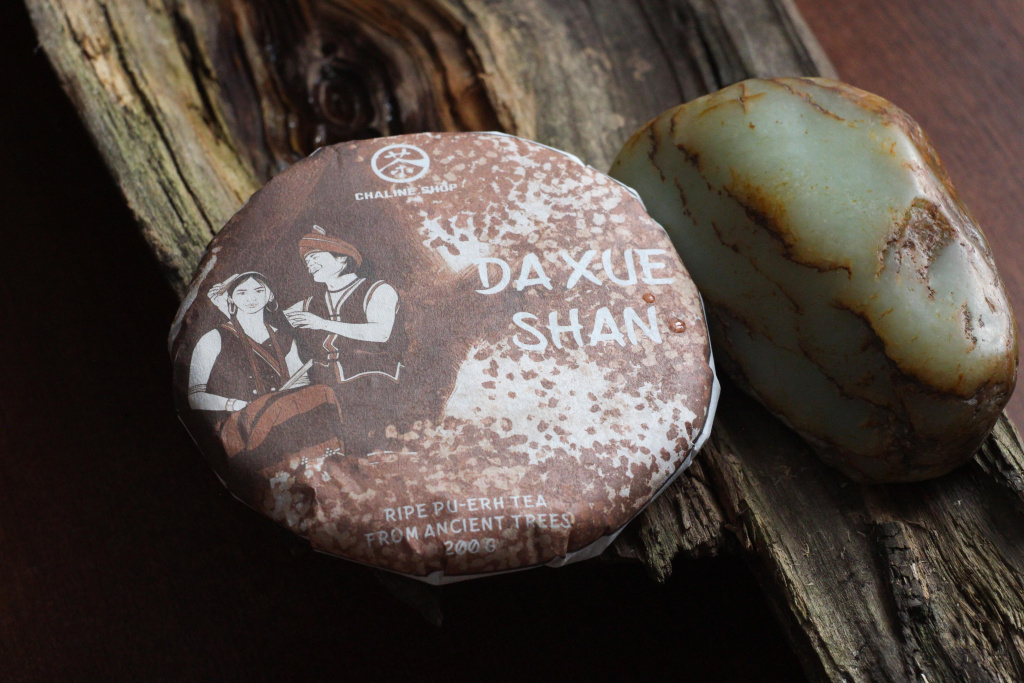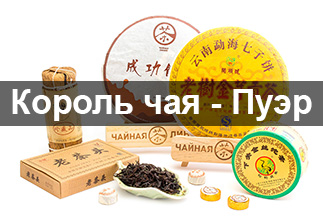We purchased raw materials collected from old trees up to 200 years old in the Daxueshan Mountains (Chinese: 大雪山, pinyin: dàxuěshān), which rise majestically in Shuangjiang County, Mengku City. This raw material was processed into Sheng Pu'er.
Next, we took the raw materials for fermentation to master Zhang Dechun (Chinese: 张德春, pinyin: zhāng déchūn), who has 19 years of experience in fermenting shu puer. Mr. Zhang Dechun owns a small factory for fermenting Chunla Xiyan tea (Chinese: 春腊习验 pinyin: chūnlà xíyàn). Fermentation is carried out in small-volume baskets (also known as fermentation with lifting off the ground).
The taste of brewed tea is strong, voluminous, multifaceted. Notes of spices, nuts, wood resins, meadow herbs are read. This puer gives a true tea state, noticeably tones, clarifies, gives the body energy and encourages action.
The tea infusion is transparent. Mesmerizing ruby-burgundy color.
An excellent specimen for a collection, single-sort, unblended Puer. The tea has a huge potential for storage and transformation over time.
The cover features a Wa (Chinese: 佤族, pinyin: wǎzú) boy and girl sitting on an old tea tree on Mount Daxueshan.
|
English name
|
Ripe puerh tea 2024 from ancient trees Da Xue Shan, 200 g |
|
Country
|
China |
|
Habitat
|
Дасюэшань (大雪山) |
|
Manufacturer
|
Чайная Линия |
|
Pressing form
|
Bing Cha (Cake Tea) |
|
Fermentation method
|
С отрывом от земли |
|
Type of tea raw material
|
Large trees (100-300 years) |
- Комментарии
- Вконтакте
Pu-erh is one of the most unique types of tea, which only gets better with age. Many people, when they first encounter this tea, wondered: why is pu-erh more often found in pressed form (cakes, bricks, tochas), and not in loose form? The reasons for this are related to both history and the practical aspects of storing and fermenting tea. Despite modern technologies that allow the production of loose pu-erh, the shape of pressed cakes remains unchanged. And pu-erh is more often found on sale in pressed form, for example, in the form of cakes or bricks, and loose pu-erh is less common. We will talk about the reasons for pressing pu-erh into cakes in this article.
Puer is a unique Chinese tea that is distinguished by its depth of taste, complexity of aromas and versatility of aftertaste. Its taste characteristics are formed under the influence of many factors, from growing conditions to the brewing method. Let's look at the main ones.
Over time, some consumers who are part of the country's "tea elite" discover mainland Chinese tea. And only a few get acquainted with Taiwanese varieties. The path of a tea person is usually long and thorny, but ultimately it leads to the King of Teas - puer. But not everyone is able to go all the way from ordinary teas to puer and appreciate its qualities.
The tea ceremony occupies a special place in the centuries-old Eastern tradition. And although the essence of this phenomenon remains constant, the nature and external manifestations of the tea ceremony in different nations have their own national characteristics. In each Chinese province, the tea ceremony and the tea used in it are varied: for example, residents of the southern provinces prefer green tea, and residents of the northern provinces - red tea, in Fujian province they more often use Oolong tea, and in Yunnan province Puer tea is widely known.









